Abstract
This single-blind controlled clinical study characterized the effects of 30-70% nitrous oxide (N2O) and 0.2-0.8% sevoflurane conscious sedation on quantitative electroencephalographic (EEG) readings of 22 healthy dental students as measured by the bispectral index (BIS). The study verified the 2 previously published BIS/N2O investigations showing no correlation between N2O dosage up to 70% and BIS. Observer's Assessment of Alertness and Sedation scores (OAA/S), however, correlated well with increasing doses of N2O from approximately 35 to 70%. A near linear dose-response relationship was established between OAA/S and end tidal (ET) sevoflurane concentrations of 0.4-0.7%. Only at the highest level of end tidal sevoflurane recorded, 0.7%, was statistically significant BIS depression seen. Subjects evaluated the acceptability of the sedative effect of the 2 gases, showing a slight preference for N2O. Comparable partial anterograde amnesia and sedation (OAA/S) were produced by both agents in administered concentrations of 40-70% N2O and 0.6-0.8% sevoflurane. Female subjects exhibited better memory and significantly less amnesia than males. No statistically significant changes occurred in any of the monitored vital signs. EMG readings demonstrated a statistically significant difference from control values only at the highest, 0.7%, ET concentration of sevoflurane. BIS does not appear useful for evaluating the level of nitrous oxide sedation in the dental setting but may have some value in assessing depth of sedation at deeper levels of sevoflurane sedation.
Full text
PDF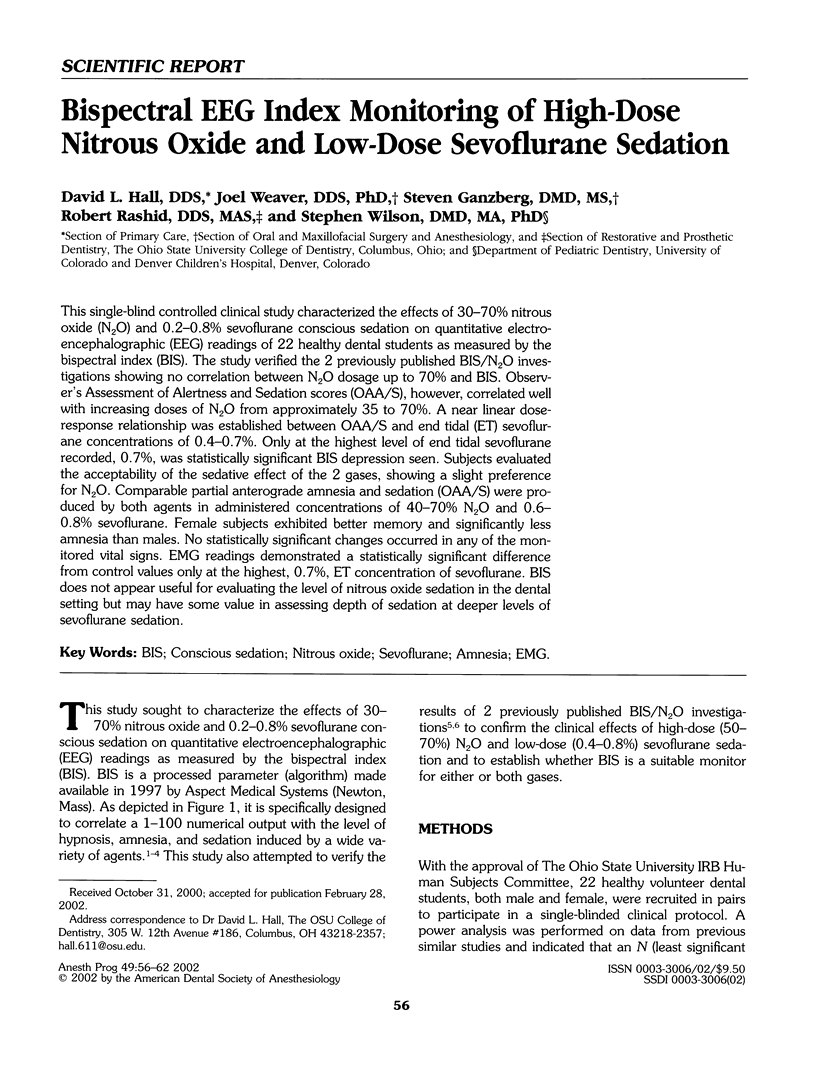
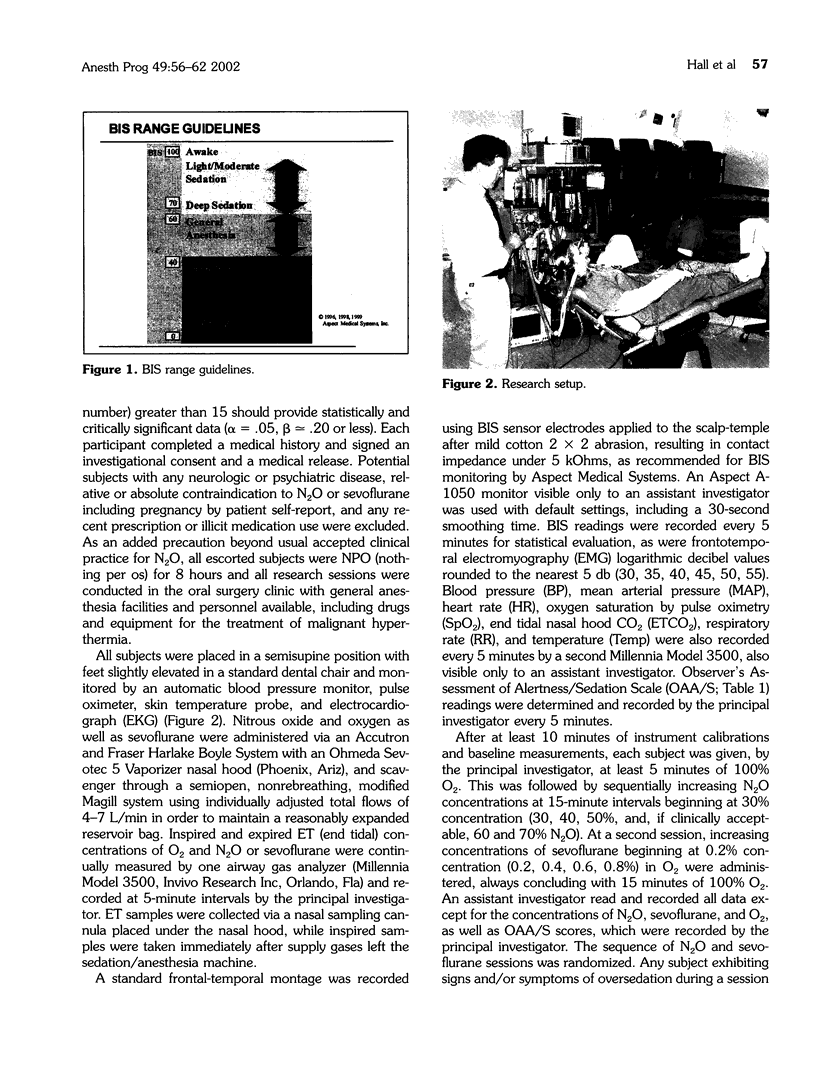
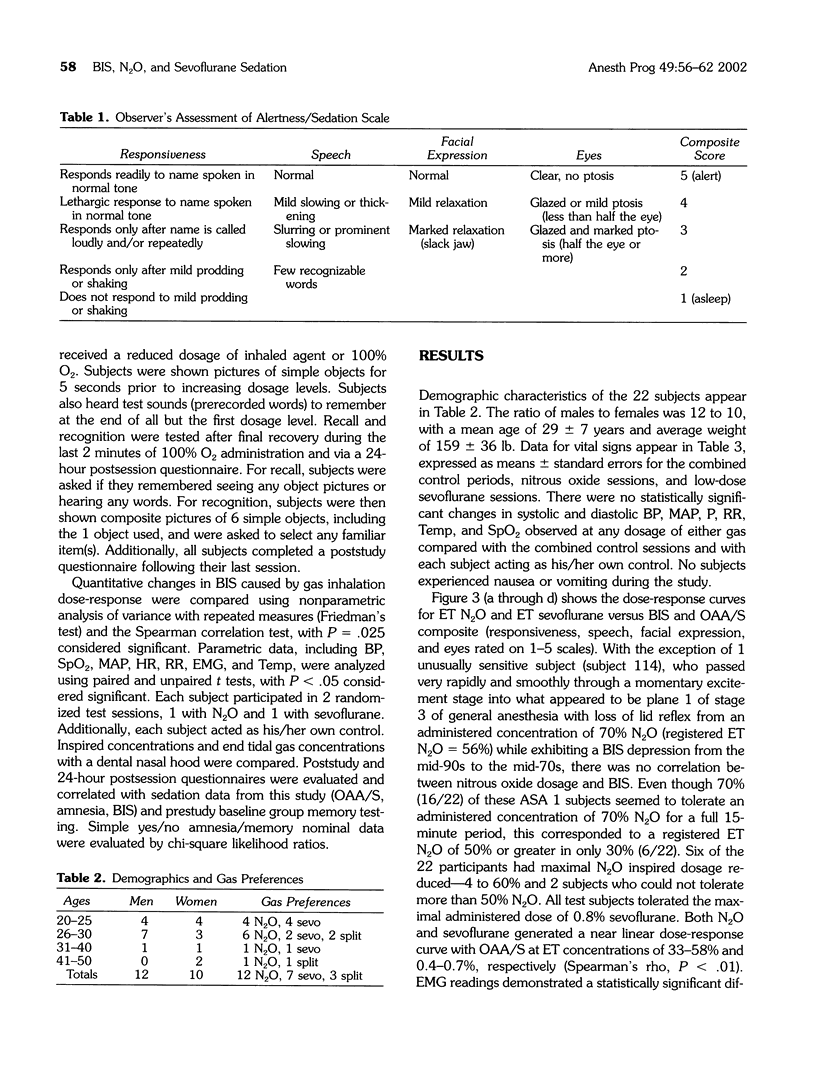
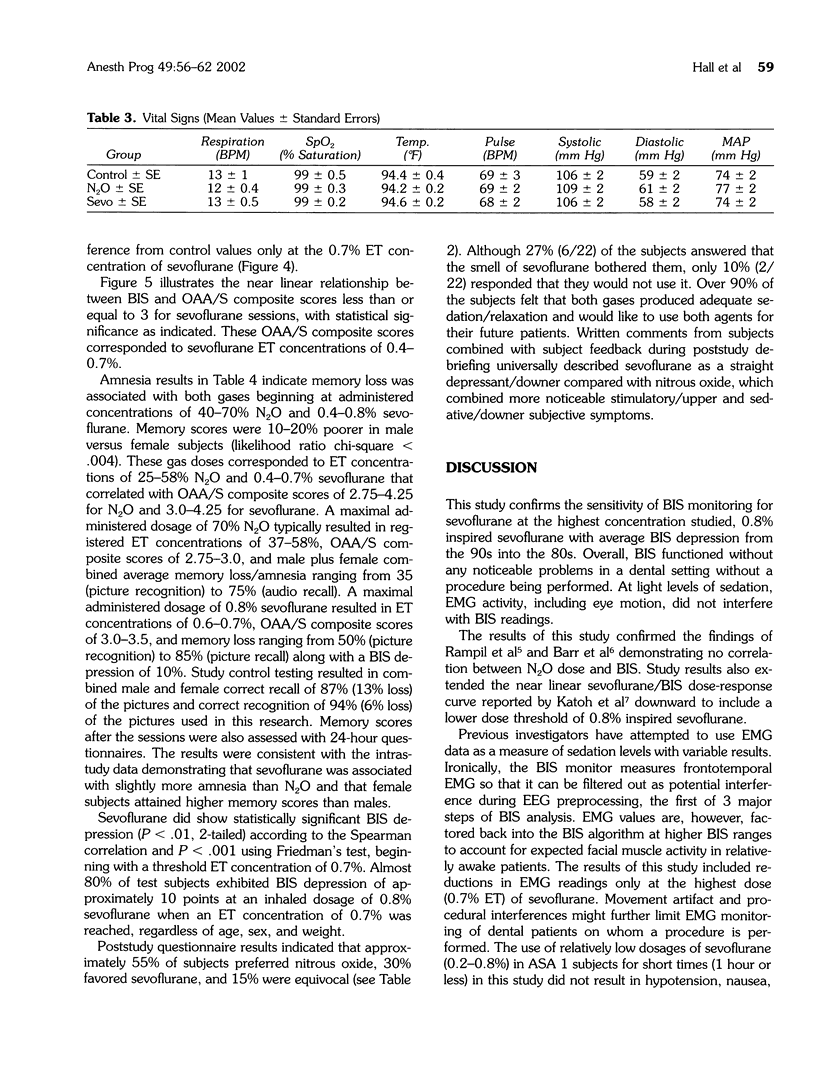

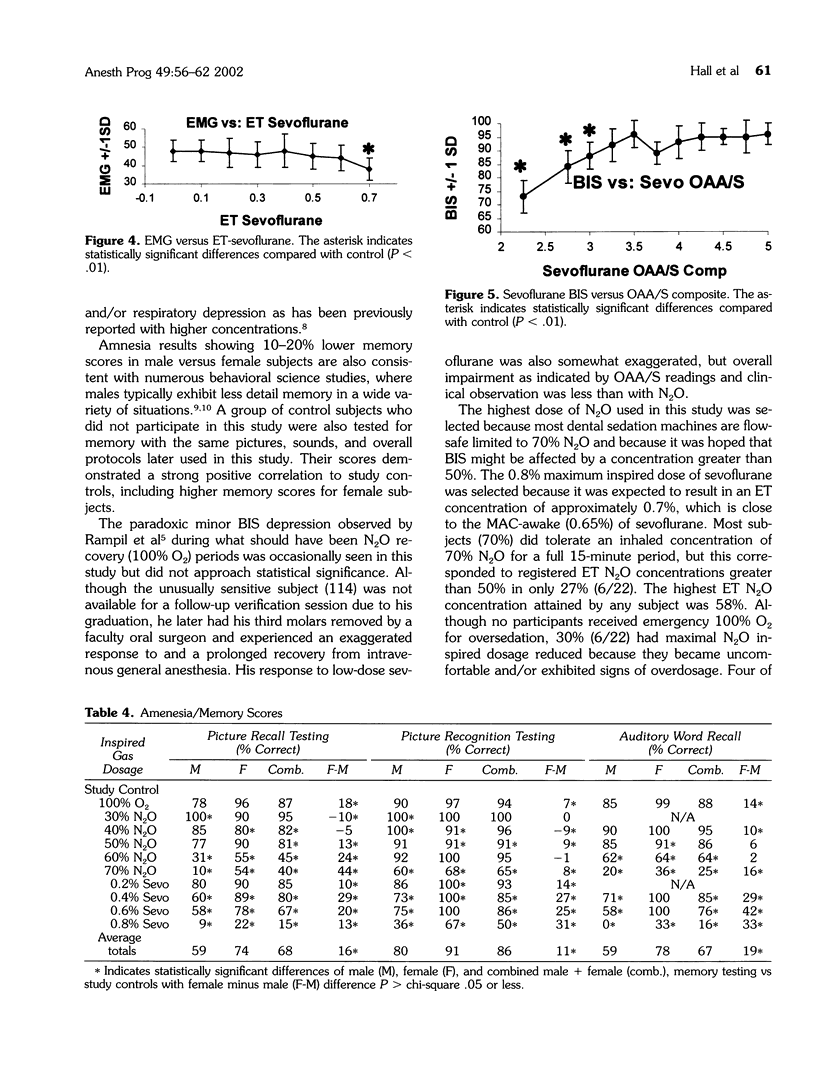
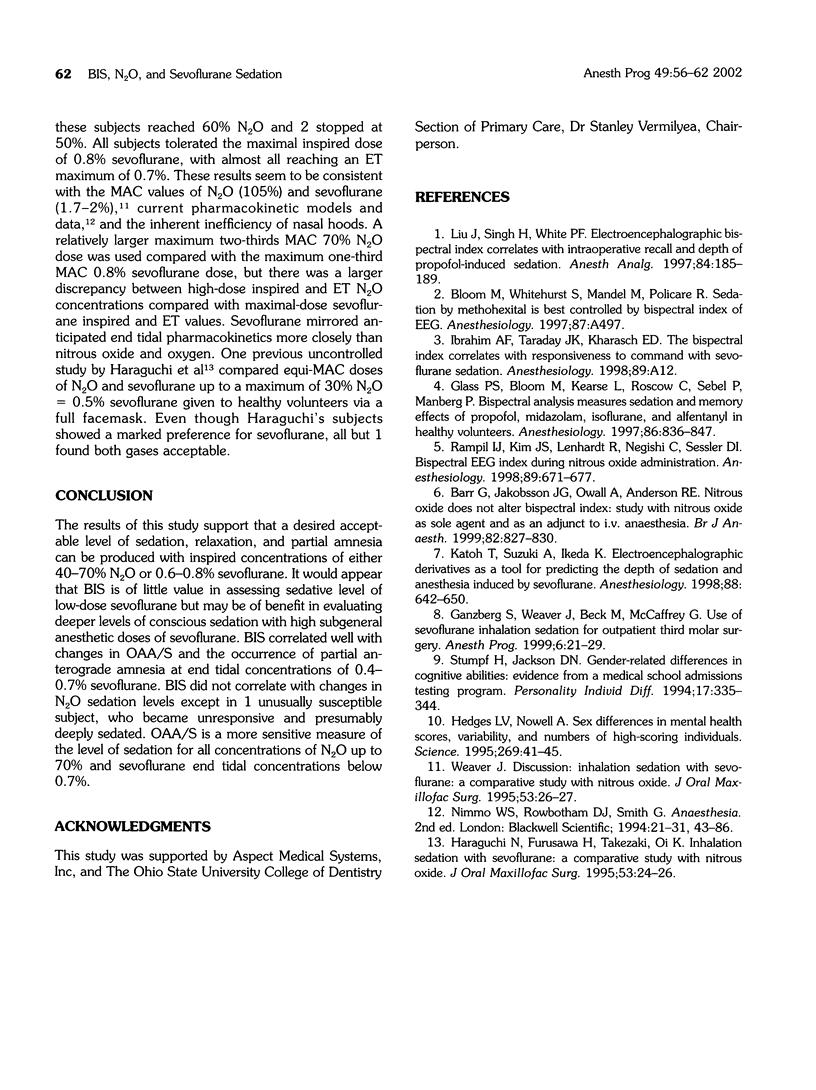
Images in this article
Selected References
These references are in PubMed. This may not be the complete list of references from this article.
- Barr G., Jakobsson J. G., Owall A., Anderson R. E. Nitrous oxide does not alter bispectral index: study with nitrous oxide as sole agent and as an adjunct to i.v. anaesthesia. Br J Anaesth. 1999 Jun;82(6):827–830. doi: 10.1093/bja/82.6.827. [DOI] [PubMed] [Google Scholar]
- Ganzberg S., Weaver J., Beck F. M., McCaffrey G. Use of sevoflurane inhalation sedation for outpatient third molar surgery. Anesth Prog. 1999 Winter;46(1):21–29. [PMC free article] [PubMed] [Google Scholar]
- Glass P. S., Bloom M., Kearse L., Rosow C., Sebel P., Manberg P. Bispectral analysis measures sedation and memory effects of propofol, midazolam, isoflurane, and alfentanil in healthy volunteers. Anesthesiology. 1997 Apr;86(4):836–847. doi: 10.1097/00000542-199704000-00014. [DOI] [PubMed] [Google Scholar]
- Hedges L. V., Nowell A. Sex differences in mental test scores, variability, and numbers of high-scoring individuals. Science. 1995 Jul 7;269(5220):41–45. doi: 10.1126/science.7604277. [DOI] [PubMed] [Google Scholar]
- Katoh T., Suzuki A., Ikeda K. Electroencephalographic derivatives as a tool for predicting the depth of sedation and anesthesia induced by sevoflurane. Anesthesiology. 1998 Mar;88(3):642–650. doi: 10.1097/00000542-199803000-00014. [DOI] [PubMed] [Google Scholar]
- Liu J., Singh H., White P. F. Electroencephalographic bispectral index correlates with intraoperative recall and depth of propofol-induced sedation. Anesth Analg. 1997 Jan;84(1):185–189. doi: 10.1097/00000539-199701000-00033. [DOI] [PubMed] [Google Scholar]
- Rampil I. J., Kim J. S., Lenhardt R., Negishi C., Sessler D. I. Bispectral EEG index during nitrous oxide administration. Anesthesiology. 1998 Sep;89(3):671–677. doi: 10.1097/00000542-199809000-00017. [DOI] [PubMed] [Google Scholar]




